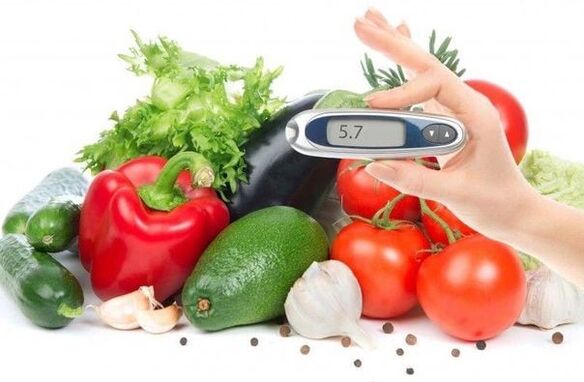
Diabetes is a very serious and dangerous disease that requires constant treatment. In conjunction with drug treatment, patients should lead a healthy lifestyle, quit drug addiction, and participate in sports. It's also important to know what people with diabetes can eat and which products should be completely rejected.
In the event of significant deterioration of health, discomfort, persistent and uncontrollable thirst, dry mouth, frequent urination, itchy skin, especially in the feet and groin area, you should contact an endocrinologist immediately and get checked. These symptoms herald the development of diabetes.
This disease is certainly dangerous and serious, but it is not a word. Many people live with disease. To normalize your health, maintain normal blood sugar levels and eliminate unpleasant symptoms, you should follow a special diet and learn what people with diabetes can eat.
Pathology can develop in adults and children. The disease is usually diagnosed in pregnant women. With proper treatment and a healthy diet, the disease can be controlled.
it's important
Not following medical advice, drinking alcohol, smoking, eating harmful food—all of these can harm the body with serious consequences. Diet therapy works for any type of pathology.
What can diabetics drink
Most patients try to pay attention to their diet. They don't eat junk food and try to make food healthy and balanced. But not everyone keeps track of the drinks they drink. People with diabetes should not drink alcoholic beverages, store-bought juices, strong teas, kvass, sweet sodas.
If you want to drink, you should prioritize the following drinks:
- Non-carbonated mineral or purified water;
- unsweetened fruit juice;
- jelly;
- candied fruit;
- weak tea;
- green tea;
- Herbal decoctions and infusions;
- freshly squeezed juice (but only diluted);
- Skim dairy products.
Doctors do not recommend that patients drink coffee. But scientists have shown that coffee is rich in useful and necessary substances, including antioxidants that help prevent tumor development. They are rich in grains and linoleic acid, which can prevent the development of heart attacks, strokes and other diseases of the cardiovascular system. Therefore, diabetics can drink coffee, mainly coffee is natural and does not contain sugar.
Basic Rules of Healthy Eating
Every diabetic, without exception, should know what to eat while living with diabetes. Eating all foods in a row can lead to a worsening of overall health.
Any diet, including diabetes, has its own characteristics and patterns.
Diet therapy should:
- Limit consumption of carbohydrate products;
- reduce caloric intake;
- use fortified foods;
- five to six meals a day;
- eating at the same time;
- Enrich your diet with natural vitamins - vegetables and fruits (except sweets, especially persimmons and dates);
- eat small meals frequently;
- Exclude long intervals between meals;
- Compile menus that take into account the GI of the product;
- Minimize salt intake;
- Refuse to eat greasy, spicy, spicy, fried food;
- Refusing to use alcohol and sweet sodas, as well as convenience foods and fast food;
- Replace sugar with natural sweeteners: fructose, sorbitol, etc. ;
- Use boiled, grilled and steamed foods.
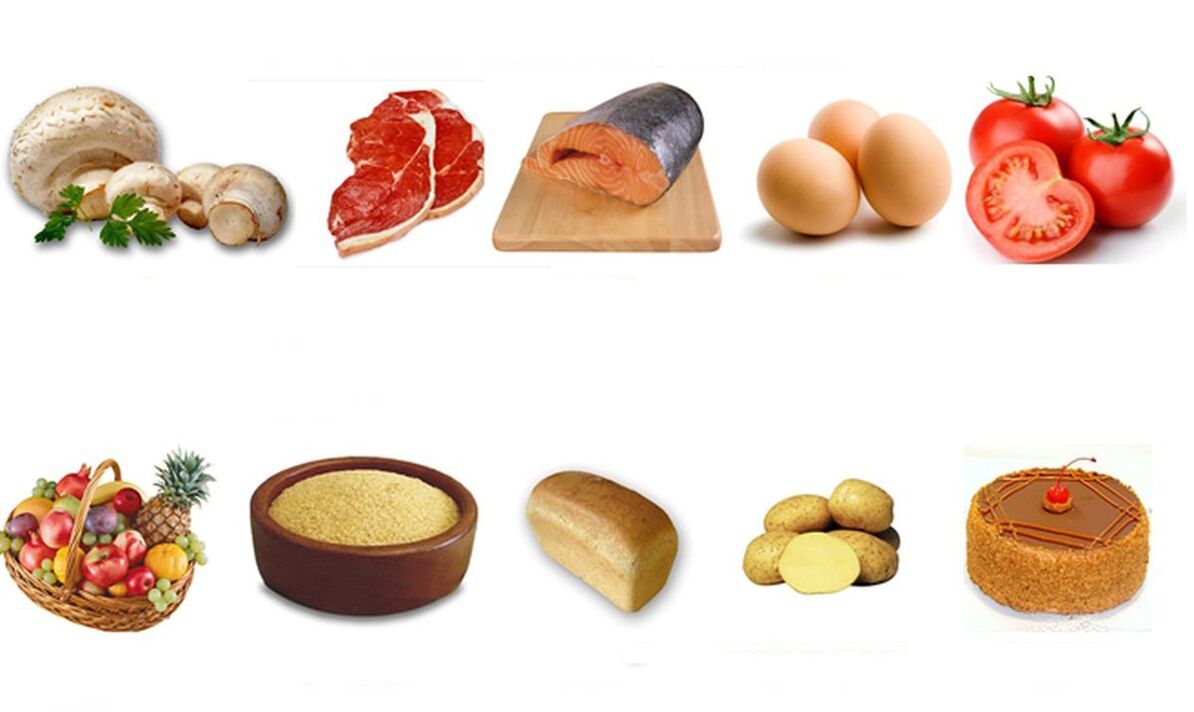
The right diet is the key to good health
People with diabetes, regardless of the type of disease, should follow an appropriate and healthy diet:
- To keep your insulin levels up, you need to eat a hearty breakfast.
- Every meal should start with a green salad. This contributes to normalization of metabolic processes and weight correction.
- The last meal should be done within three hours of bedtime.
- The food you eat should be at a comfortable temperature. Diabetics can eat cold dishes that are warm and moderate.
- Liquids can be taken half an hour before or 30 minutes after meals. Do not drink water or juice during meals.
- Sticking to a routine is important. Eating five to six times a day can help prevent sharp spikes in blood sugar levels.
- The diet should be rich in low-fat fish, low-fat dairy products, vegetables and fruits, and grains.
- People with diabetes should give up sugar and any products that contain it.
- The optimal daily calorie content is 2400 kcal.
- It is also important to monitor the chemical composition of dishes. The proportion of complex carbohydrates in the daily diet is 50%, protein - 20%, fat - 30%.
- Drink one and a half liters of purified or mineral non-carbonated water every day.
GI (glycemic index) - what is it?
Each product has its own GI. Otherwise, it's called the "bread unit" - XE. If nutritional value determines how much of a useful substance is converted into energy for the body, then GI is an indicator of the digestibility of carbohydrate products. It indicates how quickly carbohydrate products are absorbed while increasing blood sugar levels.
What people with diabetes can eat while following a diet and table number 9
Many patients, when they hear the word "diet", regard it as a sentence. They believe their diet will be kept to a minimum. In fact, everything is far from it. Dietary therapy for the disease means restricting calorie intake, consuming complex carbohydrates and eliminating simple carbohydrates. Food can be both therapeutic and delicious at the same time. You just need to know what diabetics can eat.
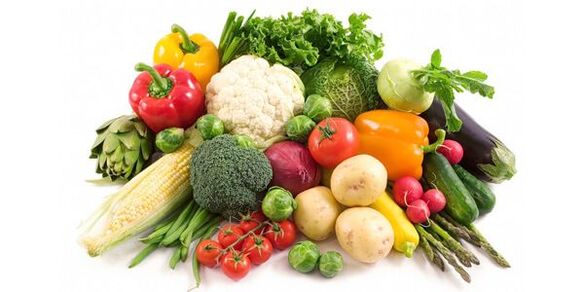
Eating the right foods will help with weight management and maintaining normal insulin levels.
Patients are allowed to use the following products:
- forced to make a living. Best is a brown bread or product for people with diabetes. The daily standard is 300 grams. Cereals, whole grains and "Borodino" breads are also allowed.
- soup. The first course is best cooked in vegetable broth.
- Lean meats (veal, beef, rabbit, chicken) and fish: pike, carp, cod. Any method of preparation, except frying only.
- Eggs and scrambled eggs. You can eat up to one egg per day. Abuse of this product can lead to elevated cholesterol levels.
- Dairy products (low-fat milk, cottage cheese, kefir, curd, fermented baked milk, natural yogurt).
- Cheese (unsalted and low fat).
- Berries and fruits: grapefruit, raspberry, apple, kiwi. Their consumption not only helps to increase the sugar content, but also helps to reduce the level of bad cholesterol.
- Vegetables: cabbage, tomatoes, cucumbers, radishes, vegetables.
- Honey (limited).
- Beverages: fruit juices, herbal preparations, mineral water.
All of these products can be consumed by diabetics. But the main thing is to observe the scale of everything. Food should not be greasy. You also can't drink.
Licensed Products for Insulin Dependent Patients
Type 1 pathology, or insulin-dependent diabetes, is characterized by severe symptoms, acute course, and increased appetite. In addition to using insulin, it's important to know what people with diabetes can eat. A properly formulated diet is the best way to stay healthy and happy.
The diets of patients with type 1 pathological diabetes were similar to those of type 2 patients. Permitted use: non-carbonated mineral water, seafood and low-fat fish, oats and buckwheat, vegetables, low-fat dairy products, hard-boiled eggs, dietary meats.
it's important
With diabetes, at least once every half month to remove the body, once a week to apply a buckwheat or kefir diet. This will help correct the weight and prevent complications of the disease.
Table 9 Pathology
Patients are most often prescribed a No. 9 diet. The diet assumed six meals a day, excluding fatty, fried, spicy, bacon, salty, and sweet foods. The energy value of the daily diet should not exceed 2500 kcal. People with diabetes can eat food prepared in any way, except fried.
What Diabetes Can't Do: Foods Allowed and Prohibited, Sample Menu
Everyone with a serious medical condition should know what diabetes can't do. The misuse of harmful products is full of spoilage.
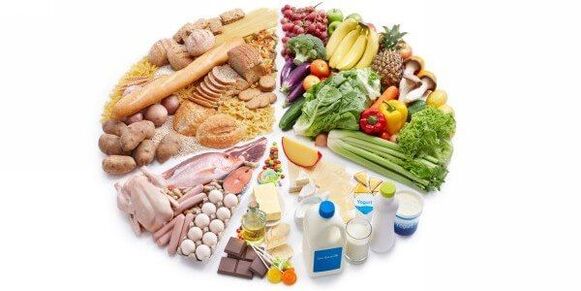
Products listed on the list should be discarded:
- Sahara. A sweetener is recommended instead.
- bake. Strongly opposed to this food. Besides being high in sugar, they are also high in calories, which is not great for blood sugar levels.
- Fatty meat and fish products.
- Smoked dishes and canned food. These products have a high glycemic index.
- Animal fat, mayonnaise.
- Dairy products high in fat.
- Semolina and cereal products, and pasta.
- vegetable. Diabetics can't eat certain vegetables, but if they don't work well, they should be limited as much as possible: potatoes, fried zucchini.
- sweet fruit.
- Beverages: Sweet soda, concentrated or store-bought juice, preserves, strong black tea.
- Snacks, seeds, chips.
- candy. For any type of diabetes, especially gestational diabetes, ice cream, jam, milk chocolate are prohibited.
- Alcoholic beverages.
Permitted and Prohibited Products:
Proper nutrition along with the introduction of insulin is the key to good health. Adhere to the diet, as well as the use of drugs, the patient should be his life. This is the only way to maintain normal blood sugar levels. What to eat and what not to eat with diabetes.
Allowed to eat:
- purified or mineral water;
- weak tea, coffee;
- mushroom;
- Haricot vert;
- radish;
- radish;
- radish;
- green beans;
- Green vegetables;
- radish;
- beet;
- eggplant;
- black pepper;
- cabbage;
- cucumber;
- tomato.
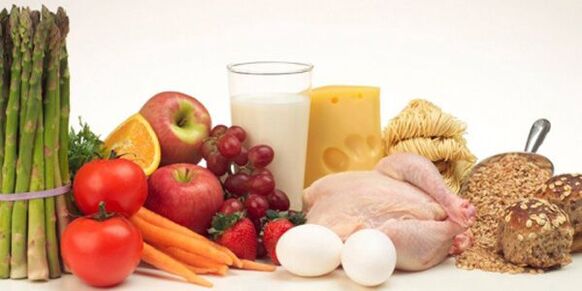
with permission:
- Egg;
- berry;
- fruit;
- soup;
- buttocks;
- forced to make a living;
- Legumes (peas, beans, lentils);
- Potato;
- Honey;
- low-fat cheese;
- low-fat dairy products;
- low-fat boiled sausage;
- Meat and fish products.
Prohibited:
- alcoholic beverages;
- Grape;
- banana;
- persimmon;
- date;
- Candy (ice cream, jam, lollipops, cookies);
- Sahara;
- seed;
- canned food;
- smoked and sausage products;
- Fatty meat and fish products;
- fatty dairy products;
- animal fat.
How to Replace Hazardous Products
Patients are prohibited from eating high-calorie foods, as such products can trigger disease progression and worsen drug effects.
Harmful products can be replaced with useful, suitable ingredients:
- White bread can be replaced with rye flour products.
- Sweets and Desserts - Berries and Diabetic Desserts.
- Animal fats are vegetable fats.
- Fatty meat products and cheeses - low-fat products, avocados.
- Cream is a low-fat dairy product.
- Ice Cream - Hard cheeses, seafood, beans.
- Beer - dairy, beef, eggs.
- Sweet soda - beets, carrots, beans.
- Sausage is a dairy product.
about weekly menu
You can make your own menu for each day or for the entire week, taking into account the possibility and impossibility of diabetes. Below is a sample menu for this week.
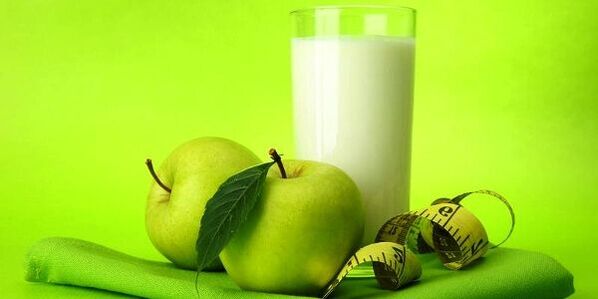
first day.
- Breakfast: Cucumber cabbage salad, oatmeal, weak tea.
- Snack: apple or kefir.
- Lunch: Vegetable soup, zucchini casserole, preserves.
- Snack: cheese casserole.
- Dinner: Buckwheat porridge, boiled chicken, juice.
the next day.
- Breakfast: milk pumpkin porridge, jelly.
- Snack: biscuits biscuits.
- Lunch: thin borsch, grilled cod fillet, millet porridge, green tea.
- Snack: Curd.
- Dinner: stewed pumpkin, kefir.
Day three.
- Breakfast: boiled eggs, cheese sandwiches, coffee.
- Snack: Baked apples.
- Lunch: fish soup, buckwheat porridge, steamed chicken meatballs, tomato sauce.
- Snack: Orange.
- Dinner: milk rice porridge, boiled shrimp, fermented baked milk.
Fourth day.
- Breakfast: scrambled eggs, cheese sandwiches, tea.
- Snack: Salad with tomatoes, cucumbers and bell peppers.
- Lunch: cabbage soup, grilled fish, preserves.
- Snack: Raspberry jelly.
- Dinner: boiled turkey, tomato juice.
Day 5.
- Breakfast: Roasted pumpkin, candied apples.
- Snack: An apple.
- Lunch: Mushroom soup, oatmeal, carrot juice.
- Snack: Kefir.
- Dinner: lazy cabbage rolls, curds.
Day 6.
- Breakfast: cheese, coffee.
- Snack: apple juice and cookies.
- Lunch: buckwheat soup with chicken nuggets, grilled cod, preserves.
- Snack: vegetable salad.
- Dinner: Steamed beef slices, oatmeal, carrot juice.
Seventh day.
- Breakfast: pumpkin porridge, green tea.
- Snacks: Any permitted fruit.
- Lunch: rice soup, chicken stuffed with pepper, tomato juice.
- Snacks: vegetable salad, cheese sandwich.
- Dinner: Buckwheat porridge, stewed cabbage, kefir.
There can be six meals. But most importantly, the last meal should be no later than three hours before bedtime.
Dietary treatment of diabetes is not difficult, but necessary. The list of allowed products is large, so the diet will not be monotonous. The main thing to understand is that eating healthy in the event of an illness is the key to good health and maintaining normal blood sugar levels.















































































